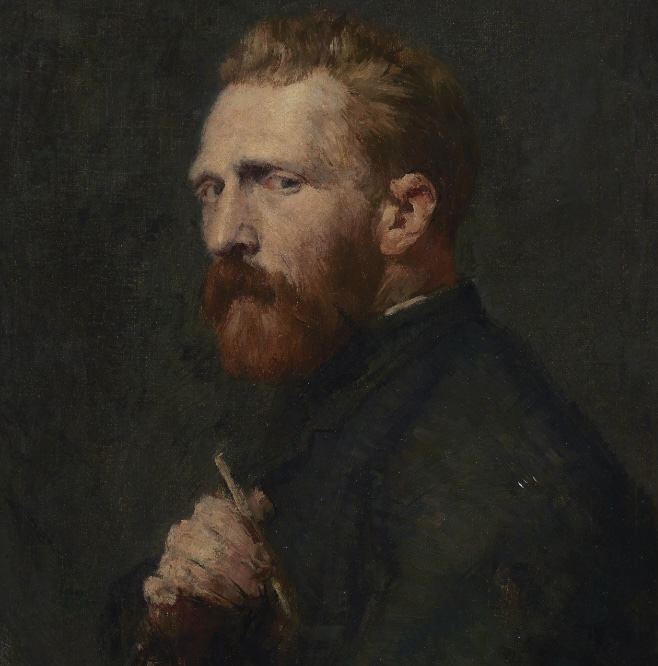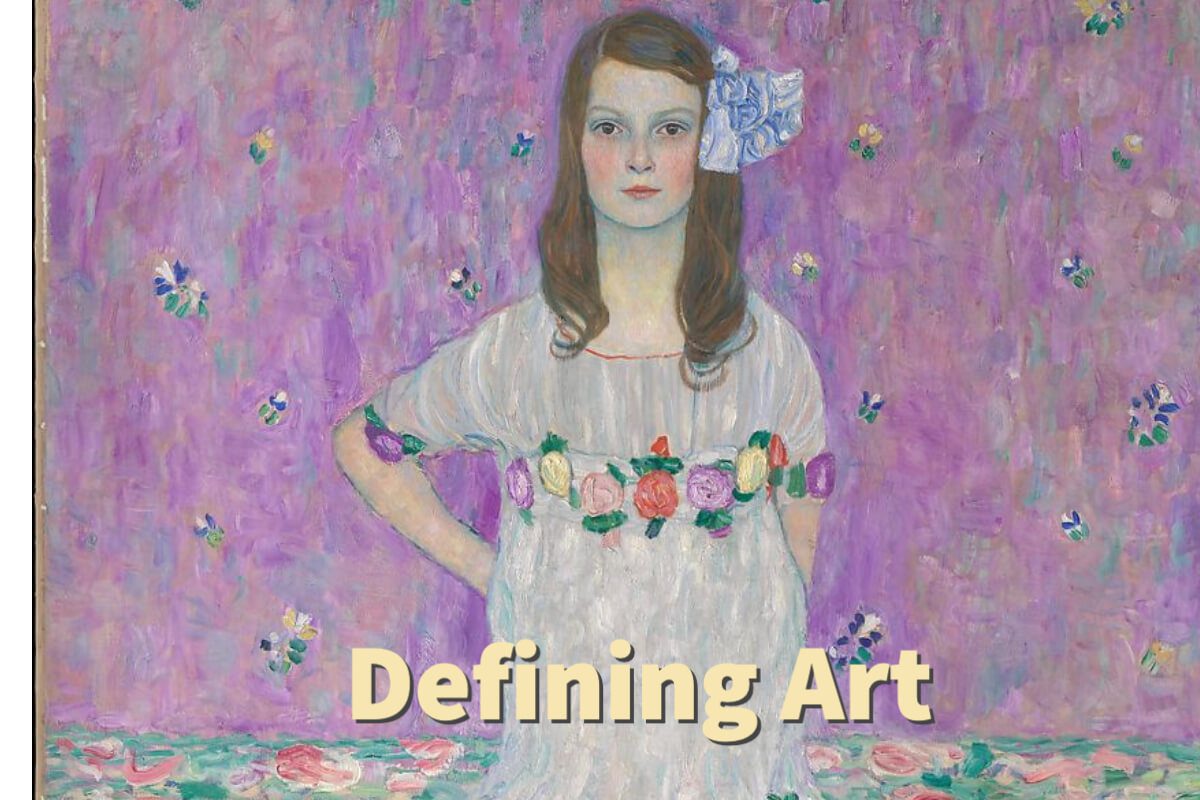Art can be tough to define. Sometimes, when we see a work of art, we wonder if it is art.
Art can be tough to define as art has no set standards or manual. Art can also be anything that the artist tells us is art. Art critics also use their knowledge and experience to judge what they see as great or bad art; they try to define art to know what they are looking at.
Table of Contents
- The Elusive Nature of Art: Understanding Why It Defies Definition
- Frequently Asked Questions
- Related Content
The Elusive Nature of Art: Understanding Why It Defies Definition
The challenge of defining art lies in its inherently subjective and boundless nature. Often, we encounter a piece of art and find ourselves questioning its artistic status. This ambiguity stems from the fact that art doesn’t adhere to fixed standards or guidelines. What constitutes art can vary widely, depending on the artist’s intent and the viewer’s perception.
Drawing from their knowledge and experience, art critics attempt to categorize and evaluate art, distinguishing between what they consider exceptional or subpar.
However, their assessments are just one perspective in the vast, diverse art world, continually resisting a singular, concrete definition. Here are some reasons why art is hard to define.
Art Has No Set Standards
In today’s world, the artist, maker, creator, or seller says whether or not what we are looking at is art or why it is great art. Art has no set standards or a manual. There are no real gatekeeping organizations to define what is considered art and what is not art.
In the past, art had many more rules, and many artists conformed to the rules of their time. They would paint what was considered to be socially acceptable for the time.

An example of an artist being forced to conform to make a living was the Swedish artist Hilma af Klint (1862-1944). Today, Hilma af Klint is considered a trailblazer for modern art, but she painted those works mostly in secret during her lifetime. Upon her death, she requested that the art be kept secret until 20 years after her death.
When finally uncovered in 1960, the world discovered she had over 1,200 magnificent pieces of modern art in colors and techniques considered ahead of her time.
By clicking here, you can learn more about Hilma Af Klint by reading Who is the Swedish artist Hilma af Klint (1862-1944)?
We learn from Hilma that even if art has no standards or gatekeepers, in a sense, the gatekeepers or standards are the public or art buyers who will determine what an artist can sell to make a living. Throughout time, artists like Hilma af Klint have usually had to paint what the public wanted to survive financially.
Even though Hilma af Klint wanted to paint her modern art, she felt the world would not accept her art when she lived (1862-1944). Hilma af Klint hid her art from the world until she felt that the world would be ready to understand her paintings.
Art Is Anything You Can Get Away With
“Art is anything you can get away with”
Marshall McLuhan
“Art is anything you can get away with” is an art quote usually credited to the American artist Andy Warhol; the Canadian philosopher and media theorist Marshall McLuhan first made this statement in his book “The Medium Is The Massage.”
Andy Warhol popularized the statement, “Art is anything you can get away with.”
Both Warhol and McLuhan understood that art was defined by what the artist said was art – or simply what an artist could get away with and tell us is art. After all, Andy Warhol turned a can of Campbell’s soup into a work of art.
This makes it so hard to define art; art is so subjective. One person thinks of it as art (as a can of Campbell’s soup), and others may think of it as an everyday object (just a can of Campbell’s soup and not art). It is this subjectiveness that makes art so hard to define.
So, in a sense, art is, like McLuhan said, what an artist can get away with for the time and place that they live. Hilma af Klint is an example of an artist considered to have fantastic art, but she never saw success in that art during her lifetime.

Vincent Van Gogh is another artist who saw no real success during his lifetime. People did not understand Van Gogh’s art, yet today, he is considered one of the most influential artists ever.
Hilma Af Klint and Vincent Van Gogh did not see success in their artwork during their lifetimes. Both of them were ahead of their time. McLuhan understood both Van Gogh and Hilma af Klint when he said:
“The artist must ever play and experiment with new means of arranging experience, even though the majority of his audience may prefer to remain fixed in their old perceptual attitudes.”
Marshall McLuhan
Vincent Van Gogh and Hilma af Klint understood that the world was not yet ready to appreciate their art during their lifetime. Neither of them was defined by the times they lived or the art of their day. This lack of definition is what has made them such great artists.
McLuhan and Warhol both had a point that art and the definition of art are also what an artist can get away with for the time and place they are living.
Art As Defined by Art Critics
Art critics define art; their job is to view art and make judgment calls based on their experience, knowledge, and perception. Respected art critics are usually listened to; they help define art.
There are usually two types of art critics as defined below:
- Art Critics Who Look At Norms Of The Day: There are those art critics who look at the norms of the day and will then judge the art according to acceptable norms of their day, place, and time. Those art critics who criticized the impressionists made judgment calls according to what was good art for the day, time, and place when the Impressionists were painting. These art critics usually defend the old artistic standards and values against the new ones.
- Art Critics Looking For Something New: The other art critics are those looking for something new. They will judge the art on how new, creative, fresh, or exciting they feel it is. These art critics are defending the new artistic standards against the older ones.
Most art critics face either of these choices: defending the old standards and values against new ones or defending the new artistic standards against the old.
An art critic responds to what they perceive as the meaning of the art and then makes a critical judgment about the work of art. Today, an art critic’s role is to help the viewer make a judgment call on the artwork and show them why they made that specific interpretation or call.
In a sense, an art critic’s role is to help us define the art we are viewing and help us view and understand the art. Because art critics are highly trained, their views can help us better define the art and what we are considering with the art, but the art critics are still making an artistic judgment call based on their training, understanding, and own perceived point of view.
Art critics disagree on what art is good and what is not. One may love a work of art, and others hate it. So, even among the art critics, they may make two different judgment calls.
This is why it can be hard to define art, as art can be subjective. I believe Leo Trotsky said it best when he said:
Leo Tolstoy
This subjectiveness makes art so hard to define and why “almost anything will go in art.” What we define as great art today may not be tomorrow.
Anita Louise Art is dedicated to art education, great artists, and inspiring others to find and create their art. We love art that uplifts and inspires. #ArtToMakeYouSmile! #ArtToMakeYouHappy!
If you want to see any of my art, you can find out more by clicking here. If you are interested in what inspires me and my paintings, you can discover more by clicking here.
We have a free newsletter and would love you to be part of our community; you can subscribe to the newsletter by clicking here. If you have any questions, I would be happy to talk to you anytime. You can reach me, Anita, by clicking here.
Subscribe to our Anita Louise Art YouTube Channel with great videos and information by clicking here.
Join us for our podcast “5 Minutes With Art.” Spend just 5 minutes a week with us to discover and learn about great art and artists. You can find out more about our podcast by clicking here.
Frequently Asked Questions
What is the definition of art?
Art is a subjective and multifaceted concept that defies a precise definition. It can encompass various forms of expression, such as visual, auditory, or performance-based, and is often a product of human creativity and imagination.
How do artists determine what is considered art?
Artists have the freedom to define what they consider as art. They explore their unique perspectives, ideas, and emotions, translating them into a creative form that resonates with them and, ideally, others.
Are there any specific criteria that determine whether something is art or not?
No, there are no universal or objective criteria that definitively determine what qualifies as art. Different individuals and cultures have diverse interpretations and standards for what they perceive as artistic.
What role do art critics play in defining art?
Art critics play a significant role in the art world. They use their knowledge, experience, and expertise to assess and evaluate artworks, providing critical analysis and interpretation. Their perspectives can influence how art is understood and appreciated.
Can bad art exist? How do we determine what is good or bad art?
The assessment of art as “good” or “bad” is highly subjective and open to interpretation. What one person considers bad art, another might appreciate. Personal taste, cultural context, and individual preferences all contribute to the evaluation of artistic quality.
Can everyday objects or actions be considered art?
Yes, everyday objects or actions can be transformed into art through the process of conceptualization or artistic intention. Artists may take ordinary items or activities and present them in a way that challenges perception, evokes emotions, or raises questions.
Is art limited to traditional mediums like painting and sculpture?
No, art extends beyond traditional mediums and includes a vast array of forms and mediums. It can encompass installations, digital art, performance art, photography, film, and much more. The possibilities for artistic expression are virtually limitless.
Does art have to convey a specific message or meaning?
Art can convey a range of messages and meanings, but it is not a requirement for all artwork. Some art is created purely for aesthetic pleasure or to evoke emotions without a specific message. The interpretation of art often lies in the hands of the viewer.
Related Content
What was the Cubism Art Movement?
Cubism is an early 20th Century avant-garde art movement that also helped to revolutionize European painting and sculpture. It helped to inspire related movements in music, literature, and architecture. There are two periods of Cubism called Analytical and Synthetic. Also, there is Orphism Cubism which is an offshoot of Cubism.
To discover more about the Cubism Art Movement, you can read our blog The Cubism Art Movement, What You Need to Know by clicking here.
Why is Takashi Murakami So Popular?
Takashi Murakami’s art successfully blurs the art lines between high and low culture. Takashi has successfully collaborated and used his art on products produced by many major brands. Today you can see the Murakami flowers in fine art, pop culture, fashion, to commercial products.
You can discover more by reading Why is Takashi Murakami So Popular? The Japanese Artist Takashi Murakami by clicking here.

